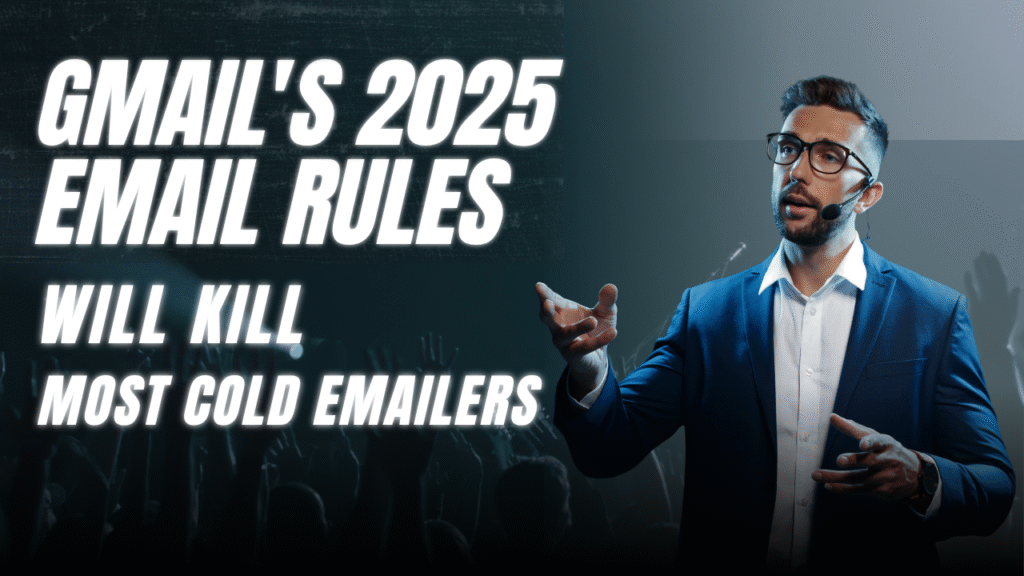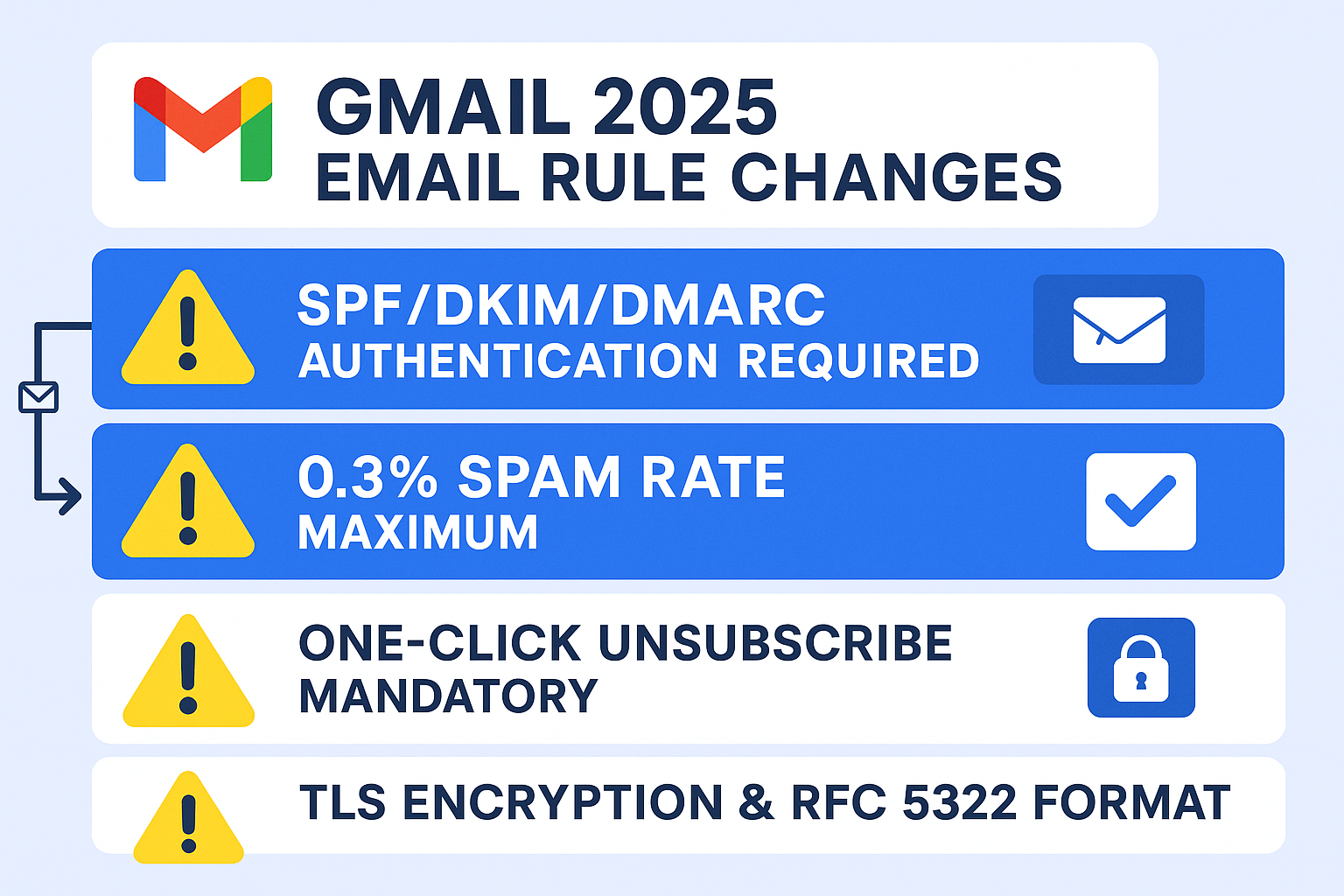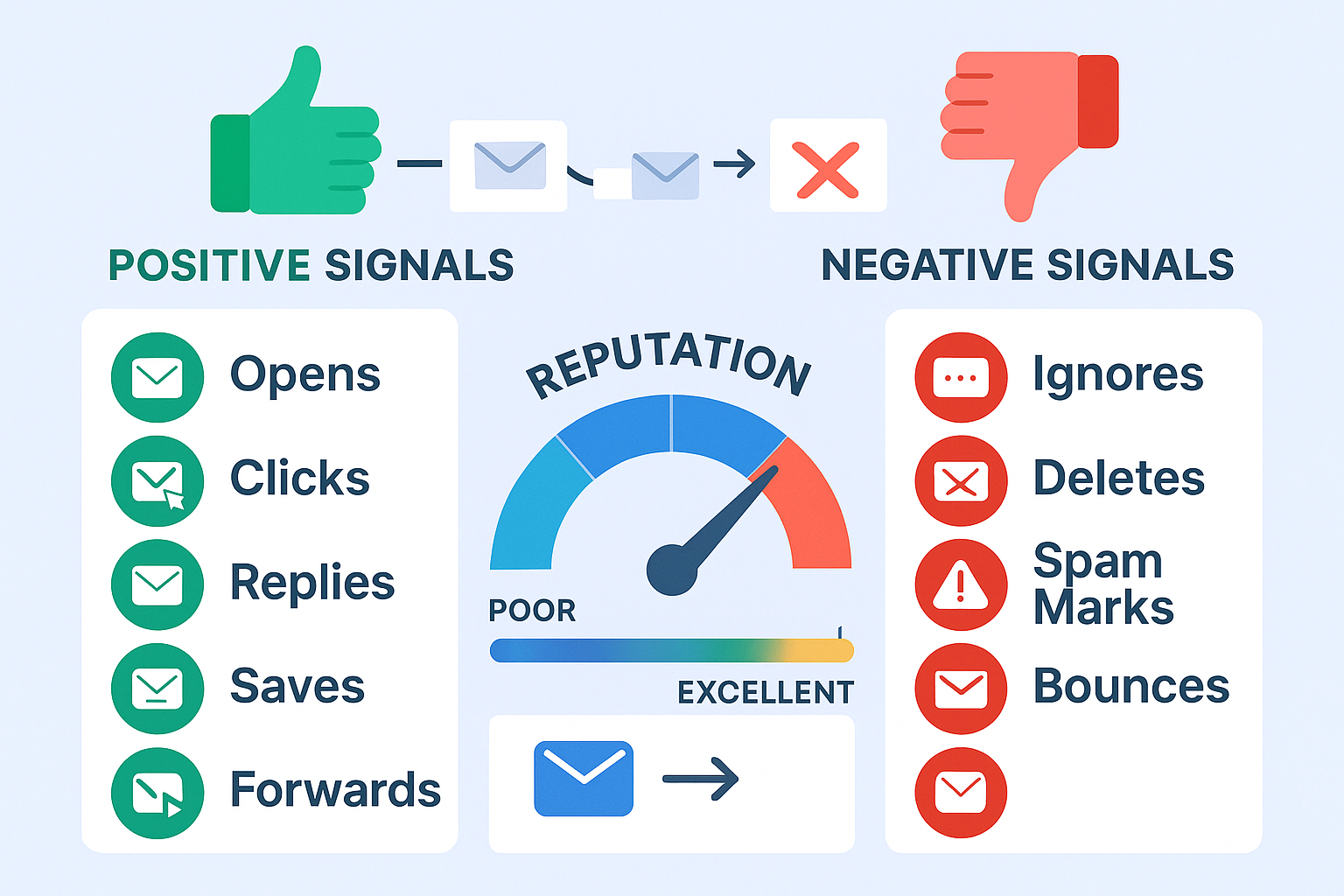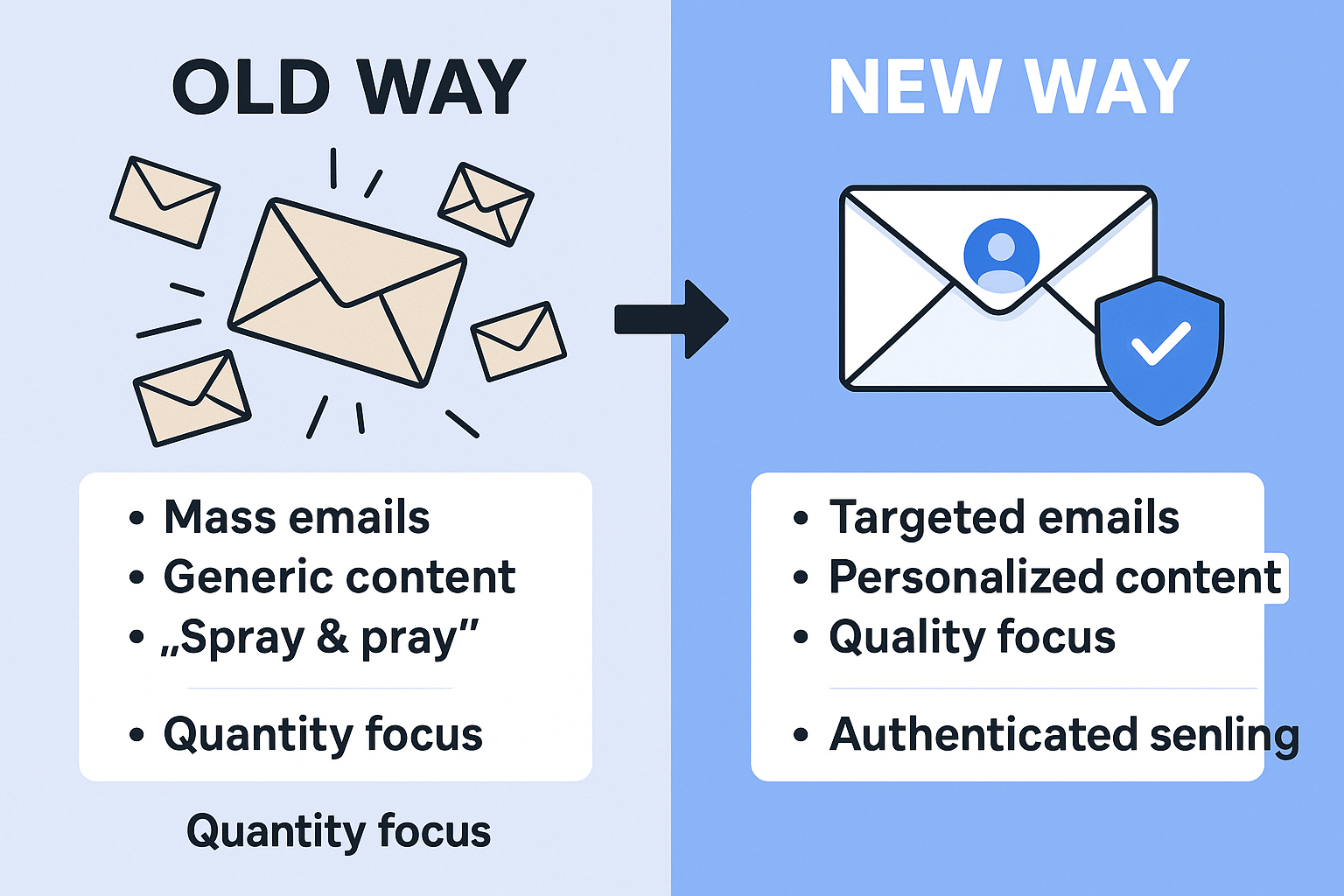- blog
- Cold Emailing
- Gmail’s 2025 Rules Kill Cold Emailers – Survival Guide

Gmail's 2025 Email Rules Will Kill Most Cold Emailers (And How You Can Survive & Thrive)
Table of Contents
Without these technical foundation
The cold email world is experiencing a seismic shift. Gmail’s 2025 email rules aren’t just another minor update – they’re fundamentally changing how cold email campaigns work. If you’ve been relying on mass, generic outreach, it’s time for a reality check.
But here’s the thing: cold emailing isn’t dead. It’s evolving. And those who adapt now will have a massive competitive advantage while others struggle to reach the inbox.
Let’s break down exactly what’s changing, why it matters, and how you can not just survive but absolutely crush it in this new environment.
The Key Changes by Gmail: What’s Actually Happening
Gmail, along with Yahoo and Microsoft, rolled out strict new sender requirements starting February 2024, with additional deadlines through June 2024. These aren’t suggestions – they’re mandatory for anyone serious about email deliverability.
Authentication is Now Non-Negotiable
Remember when you could just hit send and hope for the best? Those days are over. Every email now needs proper authentication:
- SPF records verify which servers can send emails from your domain
- DKIM adds a cryptographic signature proving your emails are legitimate
- DMARC is mandatory for bulk senders (5,000+ emails per day to Gmail)
Without these technical foundations, your emails won’t even make it to the spam folder – they’ll be rejected outright.
The 0.3% Spam Rate Ceiling
This is the game-changer. Gmail now enforces a maximum spam complaint rate of 0.3%, with the sweet spot being below 0.1%.
Think about that: if you send 1,000 emails and just 4 people mark them as spam, you’re already in dangerous territory. This single metric can make or break your sender reputation and determine whether future emails reach the inbox or disappear into the void.
One-Click Unsubscribe is Mandatory
For bulk senders, every email must include an easy unsubscribe option that processes requests within 2 days. This isn’t just about compliance – it’s about respecting your recipients and maintaining a healthy sender reputation.
TLS Encryption and Proper Formatting
All emails must use encrypted connections and follow proper formatting standards (RFC 5322). Most reputable email service providers handle this automatically, but it’s worth verifying.
Beyond Email Authentication Issues
LinkedIn outbound engine eliminates SPF, DKIM, DMARC concerns with strategic targeting frameworks
Adjusting Cold Emailing Strategies to Align with Gmail’s New Rules
Adapting to these changes isn’t just about avoiding penalties – it’s about implementing strategies that consistently deliver better results.
Technical Foundation First
Before sending a single cold email, ensure your technical setup is bulletproof:
Authentication Setup:
- Configure SPF, DKIM, and DMARC records in your DNS
- Verify TLS encryption is enabled
- Set up proper PTR records for your sending IP
Domain Warm-up:
- Start with low sending volumes (10-20 emails daily)
- Gradually increase over 2-4 weeks
- Use multiple inboxes to distribute sending load
Most email service providers can help with technical setup, but this foundation is critical for deliverability success.
Master List Hygiene
Your email list quality now directly impacts your ability to reach the inbox. Here’s how to maintain a clean, engaged list:
Email Validation:
- Verify all email addresses before sending
- Remove invalid, role-based, and risky addresses
- Use tools to identify and avoid spam traps
Regular List Cleaning:
- Remove subscribers who haven’t engaged in 6+ months
- Monitor bounce rates and remove problematic addresses
- Never purchase or rent email lists
Engagement-Based Segmentation:
- Prioritize highly engaged subscribers
- Create separate campaigns for different engagement levels
- Focus your best content on your most responsive segments
Hyper-Personalization Becomes Essential
Generic templates are dead. Every email needs to demonstrate that you understand your recipient’s specific situation:
Deep Research:
- Study the prospect’s company, role, and recent developments
- Identify specific pain points or opportunities
- Reference relevant industry trends or challenges
Value-First Messaging:
- Lead with insights, not sales pitches
- Offer specific solutions to identified problems
- Include relevant case studies or data points
Authentic Personalization: Personalized subject lines see 26% higher open rates and generate 32.7% more replies. But true personalization goes beyond inserting a first name – it’s about crafting messages that feel specifically written for that individual.
Content That Converts
Your email content needs to be mobile-optimized, concise, and spam-filter friendly:
Structure and Length:
- Keep emails between 100-150 words
- Use short paragraphs (2-3 sentences)
- Include one clear call-to-action
Subject Line Best Practices:
- Avoid spam trigger words (“Free,” “Guaranteed,” “Urgent”)
- Don’t use “Re:” or “Fw:” to fake familiarity
- Questions in subject lines achieve 21% higher open rates
Mobile Optimization: With 65% of emails opened on mobile devices, ensure your messages are easily readable on smaller screens.
Why These Rules Matter: The Death of Generic Mass Emails
The spray-and-pray approach to cold emailing is officially obsolete. These new rules represent a fundamental shift from quantity to quality.
Your Sender Reputation is Everything
Every email you send contributes to your sender reputation – a score that determines whether your future emails reach the inbox, promotions tab, or spam folder. This reputation is influenced by:
- Positive signals: Opens, clicks, replies, saves, forwards
- Negative signals: Ignores, deletes, spam marks, bounces, hitting spam traps
With the 0.3% spam complaint threshold, even a small percentage of recipients marking your emails as spam can devastate your deliverability. This means every single email needs to provide genuine value to avoid triggering spam complaints.
Quality Over Quantity Becomes Essential
The days of sending 10,000 generic emails hoping for a 1% response rate are over. The new landscape rewards senders who:
- Send fewer, highly targeted emails
- Provide genuine value in every message
- Build engagement rather than just reach
This shift actually benefits legitimate businesses. As spam gets filtered out more effectively, well-crafted, relevant emails will stand out even more.
0.3% Spam Rate vs 100% Delivery
Complete LinkedIn strategy delivers messages directly without Gmail’s restrictive email rules
Smart Follow-Up Sequences
Following up is crucial – cold emails with follow-ups are 2-3 times more likely to get responses. But generic “checking in” emails will hurt your sender reputation.
Value-Added Follow-ups:
- Share relevant industry insights
- Provide helpful resources or case studies
- Address different pain points in each message
Optimal Frequency:
- Limit to 3-4 total touchpoints
- Spaces messages 3-7 days apart
- Always provide new value in each follow-up
Monitor Your Metrics Religiously
Use Google Postmaster Tools to track key deliverability metrics:
- Spam Rate: Keep below 0.3%, aim for under 0.1%
- Domain Reputation: Maintain “High” status
- Authentication: Ensure 100% pass rates for SPF/DKIM/DMARC
Focus on engagement metrics that matter:
- Response rates (aim for 10%+ on targeted campaigns)
- Quality of responses (positive vs. negative)
- Meeting conversion rates
Future Predictions: The Evolution of Cold Emailing Post-Gmail 2024 Update
The email landscape is evolving rapidly, but several trends are becoming clear:
Email Remains Powerful Despite Changes
Don’t believe the “email is dead” narrative. The data tells a different story:
- 61% of decision-makers prefer cold email over LinkedIn (29%) or cold calls (10%)
- Email marketing delivers an average ROI of $36 for every dollar spent
- 8 out of 10 buyers prefer email contact from potential vendors
The channel isn’t disappearing – it’s becoming more selective about who gets access.
AI as Enhancement, Not Replacement
Artificial intelligence is becoming increasingly important for personalization and efficiency. However, 61.4% of consumers believe they can identify AI-generated cold emails, and 44.4% are less likely to engage with obviously AI-produced content.
The winning approach uses AI to enhance human insight, not replace it. Use AI for research, initial drafts, and optimization, but ensure the final message feels authentically human.
Quality Metrics Take Center Stage
With Apple’s privacy updates making open rates less reliable, the focus shifts to meaningful engagement:
New Success Metrics:
- Response rate (target: 10%+ on focused campaigns)
- Quality conversations initiated
- Meeting conversion rates (average: 15%)
- Pipeline generated per email sent
Multi-Channel Integration Becomes Standard
Successful outreach now combines email with other channels:
- LinkedIn outreach for relationship building
- Retargeting ads for brand awareness
- Phone calls for high-value prospects
- Social media engagement for credibility
Email remains the central hub, but it works best as part of a coordinated approach.
Future-Proof Your Outreach
LinkedIn campaigns provide reliable prospect engagement while email faces increasing restrictions
The Rise of Intent-Based Targeting
Future cold emailing will rely heavily on buying signals and intent data:
- Website behavior tracking
- Content engagement patterns
- Technology adoption signals
- Company growth indicators
This allows for incredibly precise targeting, sending emails only to prospects showing genuine interest signals.
The Bottom Line: Adapt or Get Left Behind
Gmail’s 2025 email rules aren’t killing cold emailing – they’re killing bad cold emailing. Generic, mass-blasted, unauthenticated emails are becoming obsolete, and frankly, that’s a good thing.
For sales professionals willing to adapt, these changes represent a massive opportunity. As spam gets filtered out more effectively, well-crafted, relevant, properly authenticated emails will have less competition for attention.
The winning formula for 2025 and beyond:
✅ Technical Excellence: Proper authentication, domain warm-up, and deliverability monitoring
✅ List Quality: Verified, engaged, permission-based contacts only
✅ Hyper-Personalization: Messages that demonstrate genuine understanding and provide specific value
✅ Engagement Focus: Metrics based on responses and conversions, not just opens
✅ Multi-Channel Integration: Email as part of a broader outreach strategy
The sales professionals who master these elements won’t just survive the new email landscape – they’ll dominate it. While competitors struggle with deliverability issues and spam complaints, you’ll be building genuine relationships and filling your pipeline with qualified prospects.
The choice is yours: adapt to the new reality and gain a competitive advantage, or stick with outdated tactics and watch your emails disappear into digital oblivion.
Skip Gmail's 2025 Email Rules
LinkedIn outbound bypasses deliverability challenges with direct professional messaging platform
7-day Free Trial |No Credit Card Needed.
The future of cold emailing isn’t about sending more emails – it’s about sending better ones. And that future starts now.
Frequently Asked Questions
Q: Are cold emails still effective in 2025?
Q: What happens if I don't comply with Gmail's new rules?
Q: How can I check my current spam complaint rate?
Q: Should I stop using email automation tools?
Q: How many follow-up emails should I send?

Skip Gmail's 2025 Email Rules
LinkedIn outbound bypasses deliverability challenges with direct professional messaging platform

